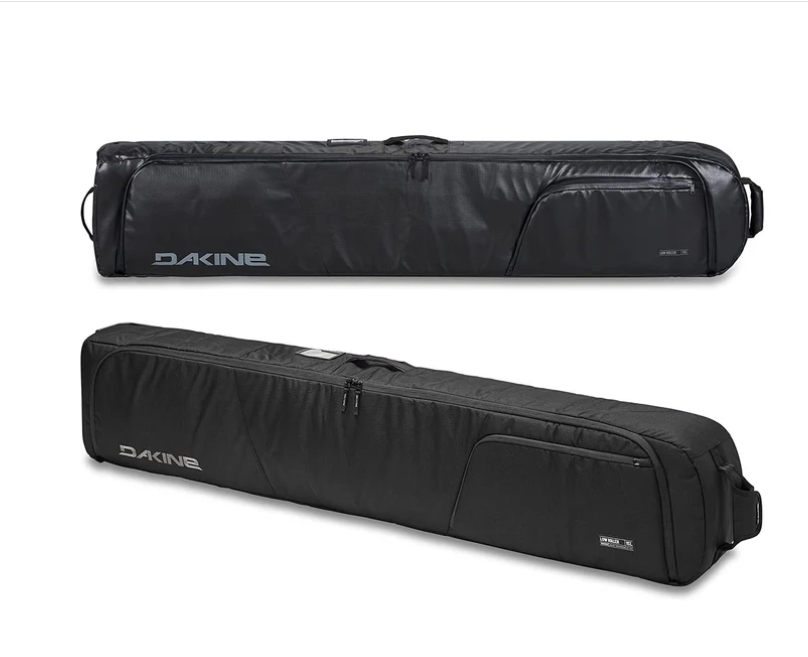
Winter is upon us, and for snowboard enthusiasts, that means hitting the slopes with a sense of excitement and adventure. But before you can carve out your next epic run, you need to ensure your gear is protected and ready for travel. One essential item for every snowboarder is a reliable snowboard bag. In this blog, we will guide you through the key factors to consider when buying a snowboard bag, ensuring you make an informed choice that suits your needs.
Why You Need a Snowboard Bag
A snowboard bag is more than just a carry case; it’s a critical piece of gear that protects your valuable equipment. Whether you’re traveling locally or internationally, a good snowboard bag ensures your board and accessories stay safe from damage.
Protection and Safety
Your travel snowboard bag is an investment, and like any investment, it deserves proper protection. A well-padded snowboard bag shields your board from scratches, dings, and other potential damage during transport. This protection is especially crucial when traveling by air, where baggage handlers might not be as gentle with your gear.
Convenience and Organization
A snowboard bag offers the convenience of keeping all your gear in one place. Many bags come with multiple compartments, allowing you to store boots, bindings, outerwear, and other essentials neatly. This organization simplifies packing and ensures you don’t forget any critical items.
Ease of Transport
Snowboard bags are designed with transport in mind. Features like wheels, shoulder straps, and padded handles make it easier to maneuver through airports, bus stations, or snowy parking lots. Instead of juggling multiple pieces of equipment, you can streamline your travel with a single, well-designed bag.
Types of Snowboard Bags
Choosing the right type of snowboard bag depends on your specific needs and how you plan to use it. Here are the main types you’ll encounter:
Padded vs. Unpadded Bags
The primary difference between padded and unpadded bags is the level of protection they offer. Padded bags are lined with foam or another cushioning material to safeguard your board from impacts. These are ideal for frequent travelers or those transporting their boards in less-controlled environments. Unpadded bags, while lighter and often cheaper, offer minimal protection and are best suited for short trips or local storage.
Wheeled vs. Non-Wheeled Bags
Wheeled snowboard bags are incredibly convenient, especially for those who travel frequently by air. The wheels allow you to roll your bag effortlessly through airports or train stations, reducing strain on your back and shoulders. Non-wheeled bags, however, are typically lighter and easier to carry over shorter distances or in more rugged terrain.
Single vs. Multi-Board Bags
Single board bags are designed to carry one snowboard, making them lighter and easier to handle. In contrast, multi-board bags can accommodate two or more snowboards, along with additional gear. Multi-board bags are perfect for those traveling with a friend or needing extra space for other equipment.
Size and Fit Considerations
Choosing the right size for your snowboard bag is crucial for ensuring adequate protection and ease of transport.
Length and Width
Your snowboard bag should match the length and width of your snowboard. Measure your board from tip to tail and choose a bag that accommodates it comfortably. A bag that is too small won’t zip properly, while one that is too large may allow your board to move around excessively, risking damage.
Boot and Gear Compartments
Consider whether you need additional compartments for boots and other gear. Bags with separate sections for boots, helmets, and outerwear prevent your board from getting scratched and keep your gear organized.
Weight Capacity
Ensure the bag you choose can handle the weight of your board and additional gear. Look for bags with reinforced seams and sturdy zippers to withstand the load without tearing or breaking.
Material and Durability
The material of your snowboard bag plays a significant role in its durability and protection level.
Fabric Types
Common materials for snowboard bags include polyester, nylon, and canvas. Polyester and nylon are popular due to their lightweight, water-resistant properties, and durability. Canvas bags, while heavier, offer a rugged and classic look but may require more maintenance.








